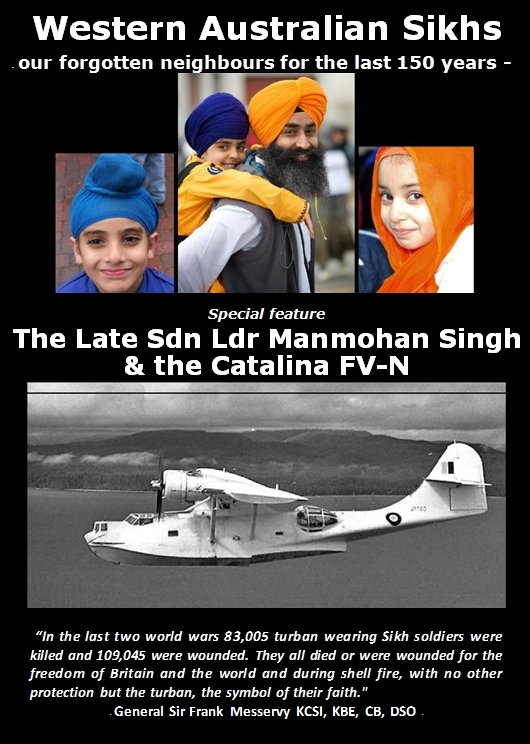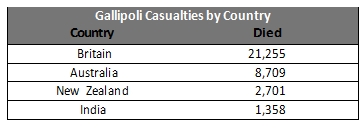|
The Early WA Sikhs-Mistaken Identity Shiploads of camels were brought to Australia in the 1860's for transport and construction as part of the colonisation of the central and western parts of Australia. Among the handlers of the camels were some Sikhs. Pal Singh (originally a camel owner in Wyndham) settled in Perth as early as 1886, with many more Sikhs joining him later. Sikhs were mistakenly called Afghans. The term 'Afghan' was used for any dark-skinned turbaned person especially if he was a cameleer or a hawker. Many Sikhs would also travel around WA hawking their wares and then return to India to retire.
The 1901 census of Western Australia showed that there were 261 Afghans resident with no Indians present. It can be assumed that all the Sikhs were included in this count. The Former Sikh Cemetery (1932 -1977) While seeking to be recognised as British Subjects, and therefore eligible for naturalisation in Western Australia, the Sikh community also sought to retain its cultural heritage and traditional practices. Sikhs follow the practice of cremation of the dead. Recognition of the religious needs of the small Sikh community resulted in the gazettal of a separate Sikh cemetery in Perth in 1932. The reserve was vested in two respected members of the Sikh community, Bulla and Massa Singh. In 1977 the reserve was cancelled and reverted back to public open space. The Sikh cemetery represents a rare phenomenon in the history and cultural heritage of the State, in that it recognizes individual practice and requirements of a cultural group at a time when conformity to established English and Australian practice was the norm.
Around 3 March every year, Sikhs hold an event at the former Sikh cemetery to commemorate the arrival of early Sikhs in Western Australia. This date is also significant as it marks the first Sikh casualty in World War II on Western Australian soil. In 2012, the commemorative event will be taking place at the former Sikh Cemetery on Saturday 3 March from 9:00am - 11:00am at Adenia Park, cnr Adenia Road and Duff Road, Ferndale. Everyone is welcome. The Late Squadron Leader Manmohan Singh In World War II, No. 205 Squadron flew patrols over the approaches to Singapore and the Indian Ocean, employing bases in Ceylon and the Nicobar Islands as outstations. It was re-equipped with PBY Catalinas (the flying boat shown on the front of brochure) in 1941. Having suffering heavy losses during operations to locate the Japanese invasion fleets No. 205 squadron withdrew from Singapore and relocated to Java. When the Japanese forces invaded Java the squadron retired to the south of the island and then to Australia. The flying boat FV-N arrived at Broome on the morning of 3 March 1942 carrying Flight Lieutenant Garnell's eight-man Catalina crew as a second crew. At 9.50 am, a Japanese air attack consisting of nine Mitsubishi Zeros destroyed all fifteen flying boats still on the water in Broome harbour. Over 100 people were killed, including some 33 service personnel from the USAAF, whose Liberator 'Arabian Nights' was shot down off Cable Beach, Broome. Flight Lieutenant Garnell's crew were still aboard the Catalina when the attack occurred. He and three others were killed instantly including flying Officer Manmohan Singh. A truly forgotten hero, Manmohan Singh died far away from his homeland fighting for the freedom of Britain and the world.
Sikhs in Gallipoli Throughout World War I and II, the Sikhs were the backbone of the Allied Forces on many crucial fronts. Numbering 100,000 in the Great War alone, they were the largest volunteer group (around 20% of the total contribution from India) - despite being only 2% of the Indian population. They received an outstanding number of awards for gallantry including 14 Victoria Crosses.
When the First World War broke out in 1914, there were six battalions of the Sikh Regiment forming part of the British Army. Since the Sikh soldiers were known for their bravery, and as the "Sword Arm of ...India", the British employed all the Sikh battalions. While recounting their brave deeds, it is hard to miss the brave 14th Ferozepur Sikhs, who served at Gallipoli. The task given to the Sikhs was highly arduous. They were to capture two Turkish Trench lines called J-11 and J-13. The brave soldiers of 14th Sikhs were equally divided for the assault on these two lines. The fierce battle took place on 3rd and 4th June, 1915, where the brave soldiers of the 14 Sikhs lost 371 officers. General Sir Ian Hamilton wrote to the Commander-in-Chief in India: Who are the Sikhs? Did you know?
Three principles of Sikhism
Sikhs continue to practice their beliefs while contributing fully to Australian society as doctors, lawyers, teachers, business people, taxi drivers, and in countless other professions across all walks of life. |



 In 1898, 45 Sikhs from Perth signed a petition addressed to the Hon. Joseph Chamberlain, Secretary of State for the Colonies. The Sikh wrote of being denied miners' rights and hawkers' licenses even though many of them had been awarded medals in service of the British against the Afghan tribes in 'Kandahar' and "Kabul". The petition requested for better treatment and livelihood.
In 1898, 45 Sikhs from Perth signed a petition addressed to the Hon. Joseph Chamberlain, Secretary of State for the Colonies. The Sikh wrote of being denied miners' rights and hawkers' licenses even though many of them had been awarded medals in service of the British against the Afghan tribes in 'Kandahar' and "Kabul". The petition requested for better treatment and livelihood. The Former Sikh Cemetery now forms part of the larger Bicentennial Adenia Reserve in Ferndale, Perth. A group of rocks record the site. The site is listed as no.04612 in the 'Register of Heritage Places' of the Heritage Council of Western Australia.
The Former Sikh Cemetery now forms part of the larger Bicentennial Adenia Reserve in Ferndale, Perth. A group of rocks record the site. The site is listed as no.04612 in the 'Register of Heritage Places' of the Heritage Council of Western Australia.

 "In spite of the tremendous losses there was not a sign of wavering all day. Not an inch of ground was given up and not a single straggler came back. The ends of the enemy's trenches were found to be blocked with the bodies of Sikhs and of the enemy who died fighting at close quarters, and the glacis slope was thickly dotted with the bodies of these fine soldiers all lying on their faces as they fell in their steady advance on the enemy. The history of Sikhs affords many instances of their value as soldiers, but it may be safely asserted that nothing finer than the grim valour and steady discipline displayed by them on the 4th June...Their devotion to duty and their splendid loyalty to their orders and to their leaders make a record their nation should look back upon with pride for many generations."
"In spite of the tremendous losses there was not a sign of wavering all day. Not an inch of ground was given up and not a single straggler came back. The ends of the enemy's trenches were found to be blocked with the bodies of Sikhs and of the enemy who died fighting at close quarters, and the glacis slope was thickly dotted with the bodies of these fine soldiers all lying on their faces as they fell in their steady advance on the enemy. The history of Sikhs affords many instances of their value as soldiers, but it may be safely asserted that nothing finer than the grim valour and steady discipline displayed by them on the 4th June...Their devotion to duty and their splendid loyalty to their orders and to their leaders make a record their nation should look back upon with pride for many generations."